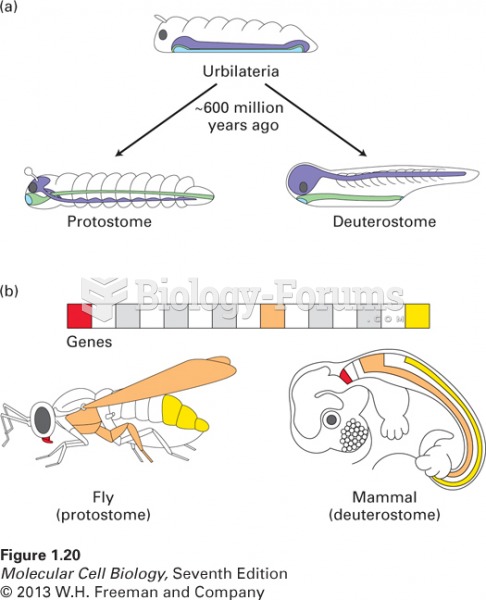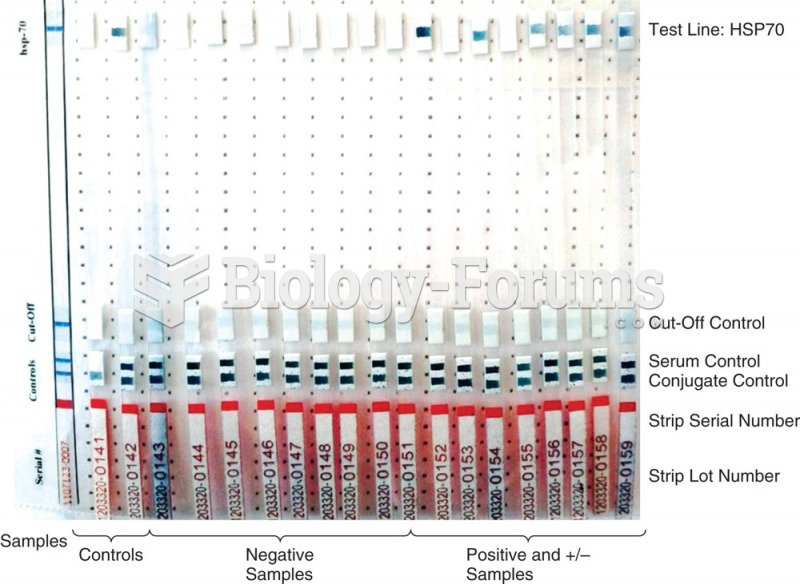|
|
|
About 80% of major fungal systemic infections are due to Candida albicans. Another form, Candida peritonitis, occurs most often in postoperative patients. A rare disease, Candida meningitis, may follow leukemia, kidney transplant, other immunosuppressed factors, or when suffering from Candida septicemia.
When blood is exposed to air, it clots. Heparin allows the blood to come in direct contact with air without clotting.
Asthma cases in Americans are about 75% higher today than they were in 1980.
Acute bronchitis is an inflammation of the breathing tubes (bronchi), which causes increased mucus production and other changes. It is usually caused by bacteria or viruses, can be serious in people who have pulmonary or cardiac diseases, and can lead to pneumonia.
The average human gut is home to perhaps 500 to 1,000 different species of bacteria.
 Morotopithecus is the earliest fossil ape to show postcranial adaptations similar to those of the li
Morotopithecus is the earliest fossil ape to show postcranial adaptations similar to those of the li
 Results from sequential study of two cohorts tested at three ages and at three different points in t
Results from sequential study of two cohorts tested at three ages and at three different points in t





